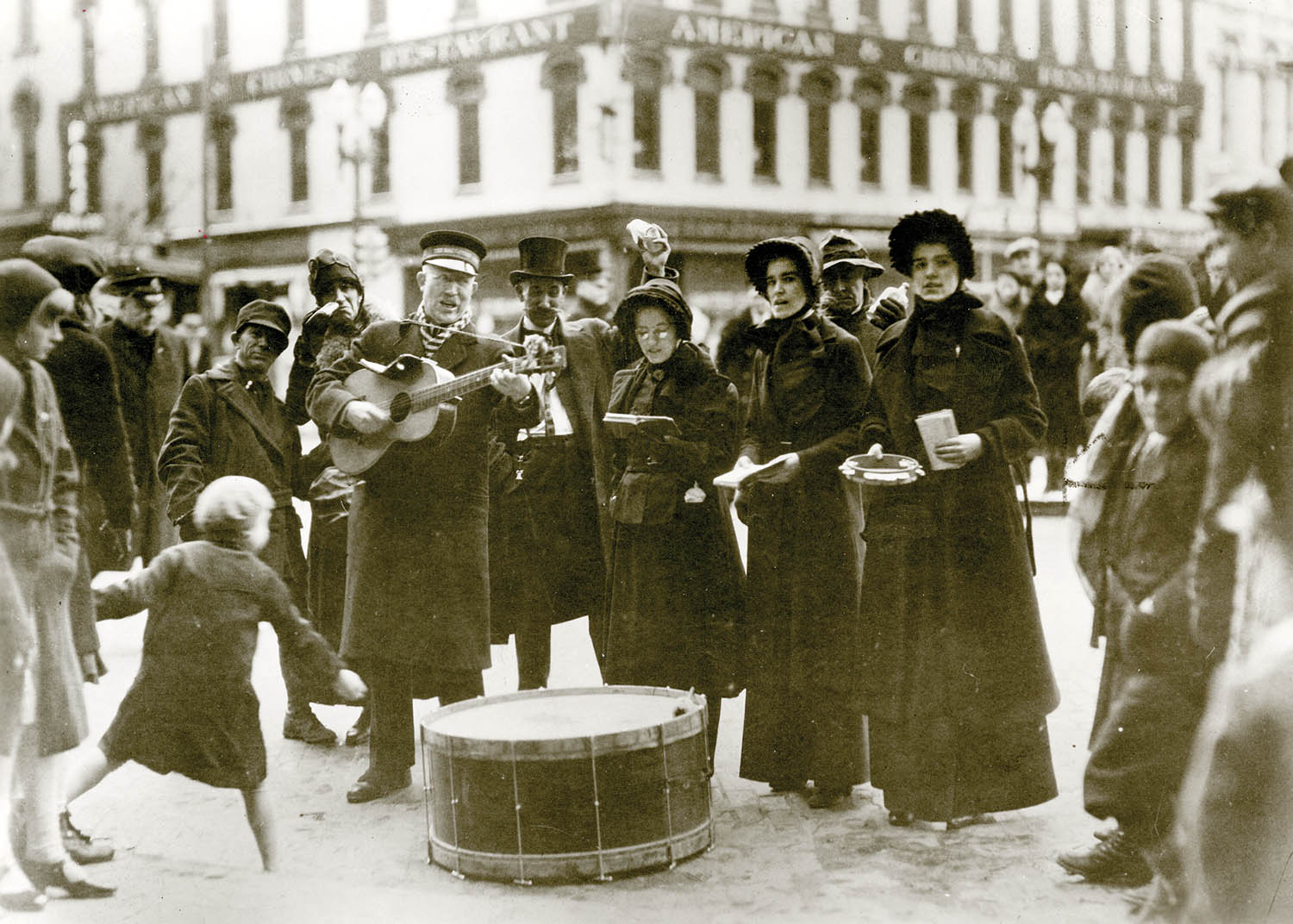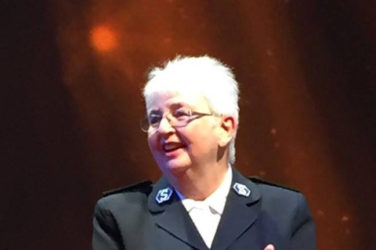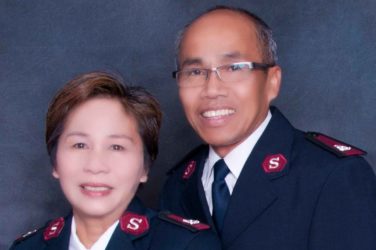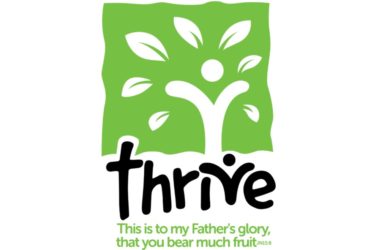Before the car was king, when travel was slower, and city residents walked or took public transportation to work and school, outdoor meetings called open-airs were an important evangelism tool for The Salvation Army. As shown in this 1930s photograph from Clark Street in downtown Chicago, open-airs took the gospel to the streets.
 Often, corps officers, the band and soldiers marched in a Parade of Witness to and from the open-air location. Spectators and converts followed along, and the spontaneous meetings drew attention. A bass drum served as a place where people could pray in repentance and accept Christ and new converts could give their testimony. An upside-down timbrel collected offerings. Songs brought the congregants together in a shared experience. At the conclusion of the meeting, those assembled were invited to attend meetings at the corps.
Often, corps officers, the band and soldiers marched in a Parade of Witness to and from the open-air location. Spectators and converts followed along, and the spontaneous meetings drew attention. A bass drum served as a place where people could pray in repentance and accept Christ and new converts could give their testimony. An upside-down timbrel collected offerings. Songs brought the congregants together in a shared experience. At the conclusion of the meeting, those assembled were invited to attend meetings at the corps.
Local authorities weren’t always consulted before open-airs, and sometimes nearby residents or businesses complained about the noise which could bring police to the scene. This might lead to municipal bans on outdoor preaching and jail time for those who participated. Some communities created designated places for outdoor preaching and speeches.
Audiences were not always kind. In the late 1800s through the early 1900s they would throw rotten food, bricks or firecrackers into open-air meetings as well as traditional church services.
Open-airs faded from popularity during the mid-20th century as car travel and television viewing increased. Today, corps occasionally hold services outside in parks with the same aim of sharing the gospel, making connections and ministering to those who might not enter the corps.
Visit sacentralmuseum.org





